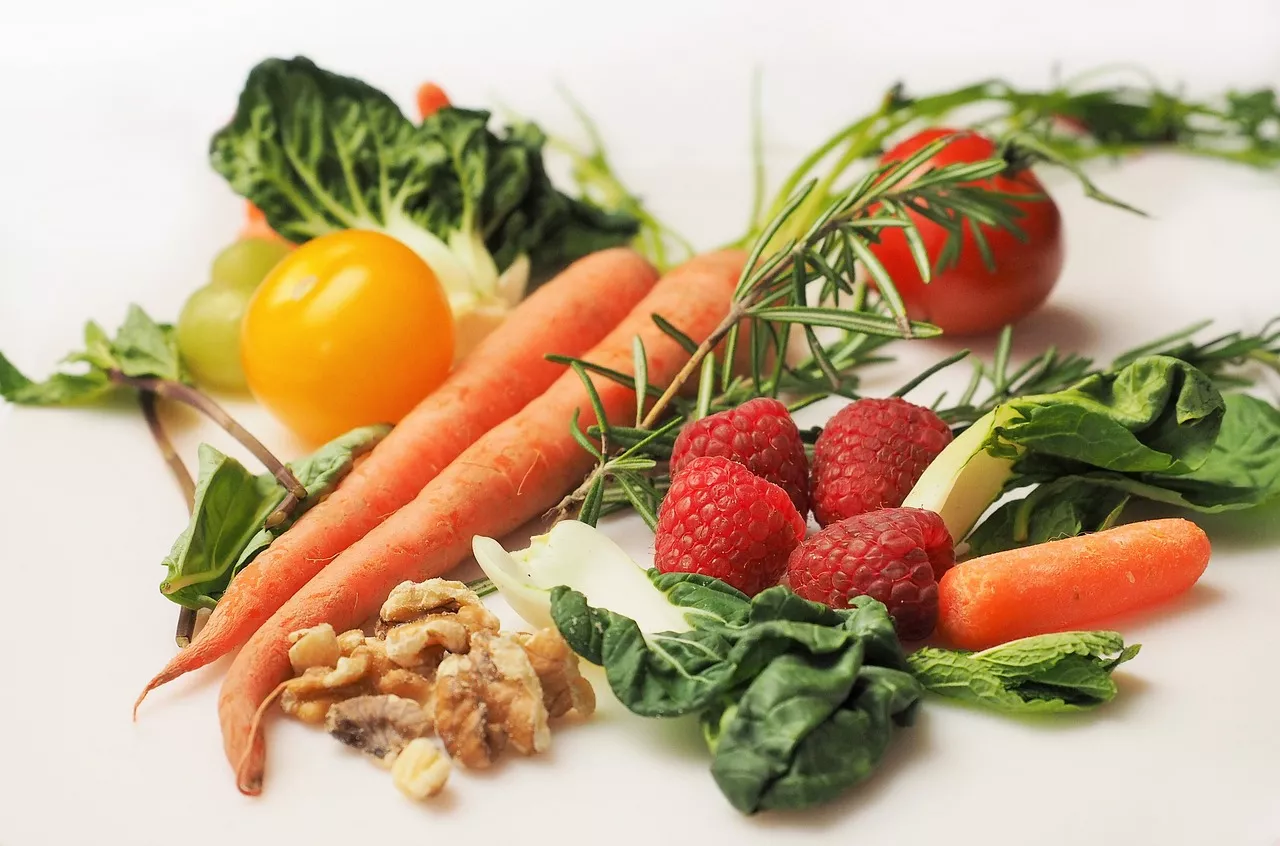The Importance of a Nutrient-Rich and Vibrant Diet
Maintaining a nutrient-rich and vibrant diet is crucial for overall health and well-being. The colors of fruits and vegetables are indicative of the particular nutrients they contain, making it easier for us to ensure a diverse intake of essential vitamins and minerals.
Amazing Health Benefits of Eating the RAINBOW
A well-balanced diet that includes a variety of colors provides a wide range of benefits. It can boost our immune system, improve digestion, support healthy skin, and even reduce the risk of chronic diseases. By embracing a colorful diet, you are not only nourishing your body but also enjoying a culinary adventure with an array of flavors and textures.
Red Foods and Their Health Benefits
Red fruits and vegetables are known for their vibrant color, which is a result of the presence of a pigment called lycopene. Lycopene is a powerful antioxidant that has been linked to a reduced risk of heart disease and certain types of cancer. Incorporating red foods into your diet can help improve blood circulation, support eye health, and promote healthy skin.
Eat the Rainbow!
Some examples of red foods include tomatoes, strawberries, watermelon, red bell peppers, and beets. Tomatoes, in particular, are rich in lycopene and vitamin C, making them a great addition to salads, sauces, and sandwiches. Strawberries are packed with antioxidants and are perfect for snacking or adding to smoothies. To enjoy the benefits of red foods, try incorporating them into your meals in creative and delicious ways.
Orange Foods and Their Health Benefits
Orange foods get their vibrant hue from carotenoids, such as beta-carotene, which our bodies convert into vitamin A. Vitamin A is essential for maintaining healthy vision, supporting immune function, and promoting proper growth and development. Orange foods are also rich in vitamin C and other antioxidants that can help protect against cell damage and inflammation.
Carrots, sweet potatoes, oranges, mangoes, and pumpkins are all examples of orange foods that you can easily incorporate into your diet. Carrots, in particular, are not only crunchy and delicious but also a great source of fiber and potassium. Try adding roasted sweet potatoes to salads or enjoy a freshly squeezed glass of orange juice to reap the benefits of these vibrant foods.
Orange Benefits for Health
Yellow Foods and Their Health Benefits
Yellow fruits and vegetables are packed with important nutrients, such as vitamin C, potassium, and folate. They are also a great source of dietary fiber and antioxidants. Incorporating yellow foods into your diet can help support a healthy immune system, improve digestion, and promote healthy skin.
Bananas, pineapples, lemons, corn, and yellow bell peppers are all examples of yellow foods that you can include in your meals. Bananas are not only a convenient and portable snack but also a great source of energy and essential minerals. Adding slices of pineapple to your salads or enjoying a freshly squeezed lemonade are delicious ways to incorporate these sunny-colored foods into your diet.
The health benefits of YELLOW foods!
Green Foods and Their Health Benefits
Green foods are often associated with health and vitality, and for good reason. They are packed with essential nutrients, including vitamins A, C, and K, as well as folate, iron, and calcium. Green foods also contain a high amount of chlorophyll, which has been shown to have detoxifying and anti-inflammatory properties.
Leafy greens, such as spinach, kale, and Swiss chard, are excellent choices for boosting your nutrient intake. These greens are rich in vitamins, minerals, and antioxidants that can help protect against chronic diseases and support overall health. Adding a handful of spinach to your smoothies or sautéing kale with garlic and olive oil are simple ways to incorporate these nutrient powerhouses into your daily meals.
Green Beans Nutrition and Health Benefits
Blue and Purple Foods and Their Health Benefits
Blue and purple foods owe their vibrant colors to compounds called anthocyanins, which have been linked to numerous health benefits. Anthocyanins are potent antioxidants that can help reduce inflammation, improve brain function, and support heart health. These foods are also rich in vitamins C and K, as well as dietary fiber.
Blueberries, blackberries, purple grapes, eggplants, and purple cabbage are all examples of blue and purple foods. Blueberries, in particular, are a delicious and versatile fruit that can be enjoyed on their own, added to yogurt, or incorporated into baked goods. Try experimenting with these colorful ingredients to add a burst of flavor and nutrients to your meals.
Top 10 Purple Foods You Need to Try
Incorporating a Variety of Colors in Your Daily Diet
Now that you're aware of the health benefits associated with different colors of foods, it's time to start incorporating them into your daily diet. Aim to include a variety of colors in each meal to ensure you're getting a wide range of nutrients. This can be as simple as adding a handful of leafy greens to your sandwich, topping your oatmeal with fresh berries, or snacking on sliced bell peppers with hummus.
Incorporating Super Foods Into Your Diet
To make it easier, consider planning your meals around a color theme. For example, you could have a "green day" where you focus on incorporating different shades of green into your meals. This not only makes your meals visually appealing but also ensures you're getting a diverse range of nutrients.
Recipes and Meal Ideas Using Colorful Ingredients
To help you get started on your journey to a colorful and nutrient-rich diet, here are some recipe ideas using colorful ingredients:
1. Rainbow Salad: Combine a variety of colorful vegetables, such as cherry tomatoes, bell peppers, carrots, and purple cabbage, with your choice of protein and a flavorful dressing.
Rainbow Salad Recipe
2. Green Smoothie Bowl: Blend together spinach, banana, avocado, and your choice of liquid (such as almond milk or coconut water). Top with sliced kiwi, hemp seeds, and granola for added crunch.
How to Make a Super-Green Smoothie Bowl
3. Roasted Vegetable Medley: Toss a mix of colorful vegetables, such as butternut squash, Brussels sprouts, and red onions, with olive oil, salt, and pepper. Roast in the oven until tender and caramelized.
Roasted Vegetables
4. Purple Sweet Potato Mash: Boil purple sweet potatoes until soft, then mash with a splash of coconut milk and a drizzle of maple syrup. Serve as a colorful side dish.
Mashed Purple Sweet Potatoes Recipe
5. Citrus Salad: Combine segments of oranges, grapefruits, and blood oranges with arugula, toasted almonds, and a citrus vinaigrette for a refreshing and vitamin-packed salad.
Remember, the possibilities are endless when it comes to creating colorful and nutritious meals. Don't be afraid to experiment and have fun with your food!
A Delicious Citrus Salad
Embracing a Colorful and Nutrient-Rich Diet
Incorporating a wide variety of colorful fruits and vegetables into your daily diet is a simple yet effective way to ensure you're getting a range of essential nutrients. From red tomatoes to purple cabbage, each color represents a unique set of vitamins, minerals, and antioxidants that can support your overall health and well-being.
Top 10 Tips for a Balanced and Nutrient-Rich Diet
By embracing a colorful and nutrient-rich diet, you can not only enjoy a visually appealing plate but also nourish your body from the inside out. So, why settle for bland and monotonous when you can indulge in the taste of the rainbow? Start exploring the wonderful world of food by colors and experience the benefits of a vibrant and nutrient-rich eating experience today!

 A Step-by-Step Guide to Making Irresistible Homestyle Potato Chips
A Step-by-Step Guide to Making Irresistible Homestyle Potato Chips



